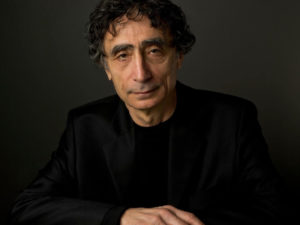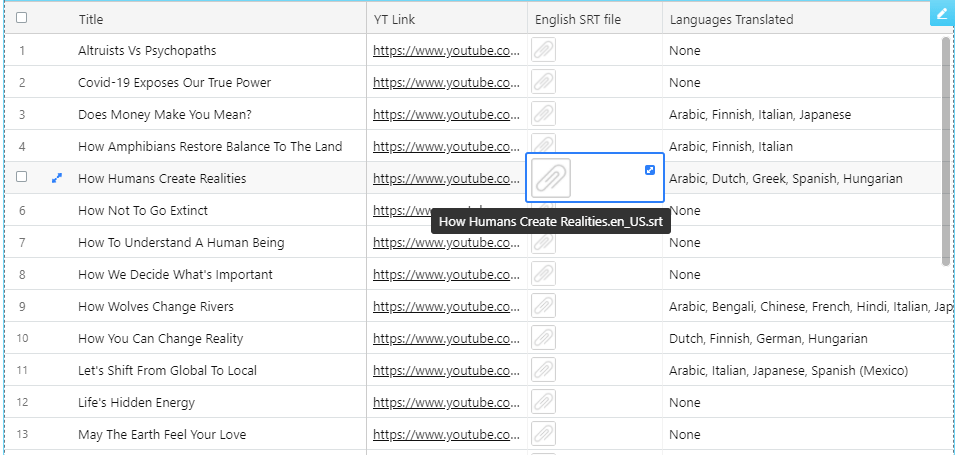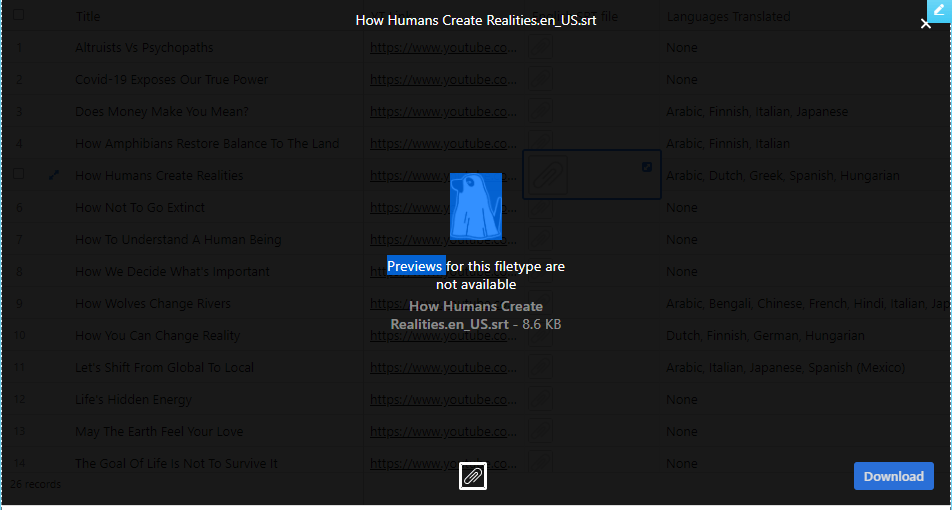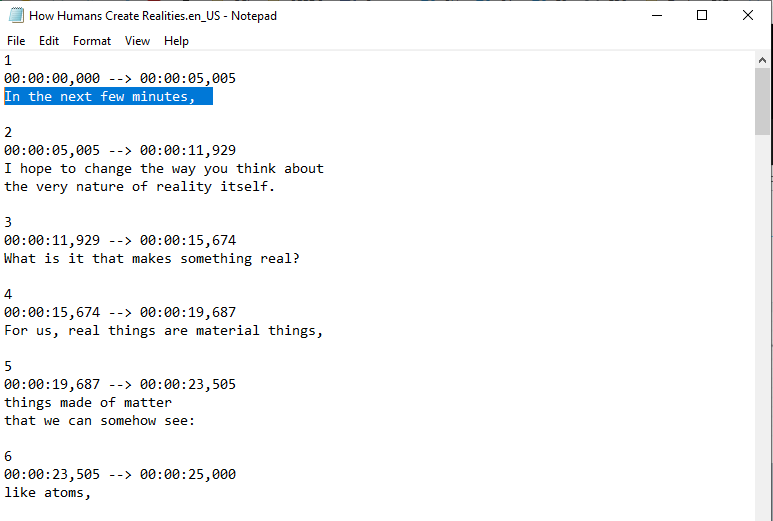
What is the one thing you must be willing to do in order to heal your trauma?

“Not all addictions are rooted in abuse or trauma, but I do believe they can all be traced to painful experience. A hurt is at the center of all addictive behaviours. It is present in the gambler, the Internet addict, the compulsive shopper and the workaholic. The wound may not be as deep and the ache not as excruciating, and it may even be entirely hidden—but it’s there. As we’ll see, the effects of early stress or adverse experiences directly shape both the psychology and the neurobiology of addiction in the brain.” – Dr. Gabor Maté, In the Realm of Hungry Ghosts: Close Encounters with Addiction
The Hungry Ghost Inside Us” delves into the profound complexities of addiction, as narrated by Dr. Gabor Maté, a medical doctor with extensive experience working with severely addicted individuals. Through his insightful lens, the video explores the often misunderstood realm of addiction, not as a mere series of bad choices or a biological inevitability but as a desperate attempt to fill an internal void wrought by pain and trauma.
Dr. Maté challenges the conventional discourse on addiction by shifting the focus from the substances themselves to the relief they provide from deep-seated pain. This pain, he elucidates, stems from a myriad of sources, notably from childhood trauma, neglect, and abuse, which fundamentally shape brain development and emotional coping mechanisms. He introduces the metaphor of the “hungry ghosts” from Buddhist philosophy to encapsulate the insatiable emptiness that drives addictive behaviors, extending beyond drugs to include consumerism, technology, and power.
The narrative further extends to societal and cultural dimensions, particularly highlighting the historical and ongoing trauma experienced by Indigenous peoples and how this collective suffering translates into individual and community-wide addictions. In parallel, Dr. Maté critiques the addiction to power and wealth that characterizes many of those in positions of authority, underscoring a universal struggle with inner voids and the destructive pursuit of external fulfillment.
At its core, the video advocates for a radical introspection and communal support to discover inner fulfillment and resilience. Drawing on the teachings of Jesus and Buddha, Dr. Maté invites viewers to seek empowerment not from external sources but from within, fostering a world that prioritizes compassion, understanding, and a profound connection to our intrinsic human nature and the natural world. This powerful message not only redefines addiction but also offers a beacon of hope for healing and transformation in a world riddled with pain and disconnection.
As a medical doctor, I have worked with some very, very addicted people. People who use heroin, cocaine, alcohol, crystal meth and every drug known to man. And these people suffer.
They lose their health, they lose their beauty, they lose their teeth, they lose their wealth, they lose human relationships and in the end, they often lose their lives. And yet, nothing can force them to give up their addiction. The addictions are powerful and the question is why.
If you want to understand addiction, you can’t look at what’s wrong with the addiction, you have to look at what’s right about it.
In other words, what is the person getting from the addiction that otherwise they don’t have. What addicts get is release from pain, what they get is a sense of peace, a sense of control, a sense of calmness, very, very temporarily. And thus the real question in addiction is not why the addiction, but why the pain?
Now, if you want to ask the question of why people are in pain, you can’t look at their genetics, you have to look at their lives. And in case of my highly addicted patients, it’s very clear why they are in pain. Because they have been abused all of their lives. They began life as abused children – physically abused, neglected, abandoned over and over again. And that’s why the pain.
The human brain develops in interaction with the environment so the kind of environment that a child has will actually shape the development of the brain.
The Buddhists have this idea of the hungry ghosts — the hungry ghosts are creatures with large empty bellies and small, scrawny necks and tiny little mouths, so they can never get enough, they can never fill this emptiness on the inside. And the addiction is all about trying to fill that emptiness from the outside.
From that perspective, you can understand that there are many, many addictions. Yes, there is the addiction to drugs, but there is also the addiction to consumerism, there is the addiction to sex, to the internet, to shopping, to food. For each person, there is a different way of filling the emptiness but the emptiness always goes back to what we didn’t get when we were very small.
Many of my patients are actually First Nation Indian people, native Indian people in Canada and they are heavily addicted. Why? Because their lands were taken away from them, and because they were killed and abused for generations and generations and generations.
If you can understand the suffering of these native people and how that suffering makes them seek relief from pain in their addictions, what about the people who are perpetrating it? What are they addicted to? Well they are addicted to power, they are addicted to wealth, they are addicted to acquisition. They want to make themselves bigger.
The addiction to power is always about the emptiness that we try to fill from the outside.
If you look at the story about Jesus and Buddha, both of them were tempted by the devil and one of the things that the devil offers them is power and they both say no because they have the power inside of themselves, they don’t need it from the outside. They don’t want to control people, they want to teach people by example, not through force. So they refuse power.
Jesus says the Kingdom of God is within, that the power is not outside of yourself but inside.
And the Buddha, says, “don’t worship me, find a lamp inside yourself, be a lamp unto yourselves, find a light within.”
And so as we look this difficult world, let’s not look to the people in power to change things. Because the people in power are very often, some of the emptiest people in the world and they are not going to change things for us. We have to find that light within ourselves, we have to find the light within communities and in our own wisdom and our own creativity.
If you find that light within, if you find our own nature, then we will be kinder unto ourselves and we will also be kinder to nature.
 Gabor Maté is a Hungarian-Canadian physician. He has a background in family practice and a special interest in childhood development and trauma, and in their potential lifelong impacts on physical and mental health, including on autoimmune disease, cancer, attention deficit hyperactivity disorder (ADHD), addictions, and a wide range of other conditions. Maté’s approach to addiction focuses on the trauma his patients have suffered and looks to address this in their recovery. In his book In the Realm of Hungry Ghosts: Close Encounters with Addiction, Maté discusses the types of trauma suffered by addicts and how this affects their decision making in later life. He believes in the connection between mind and body health. He has authored four books exploring topics including ADHD, stress, developmental psychology, and addiction.
Gabor Maté is a Hungarian-Canadian physician. He has a background in family practice and a special interest in childhood development and trauma, and in their potential lifelong impacts on physical and mental health, including on autoimmune disease, cancer, attention deficit hyperactivity disorder (ADHD), addictions, and a wide range of other conditions. Maté’s approach to addiction focuses on the trauma his patients have suffered and looks to address this in their recovery. In his book In the Realm of Hungry Ghosts: Close Encounters with Addiction, Maté discusses the types of trauma suffered by addicts and how this affects their decision making in later life. He believes in the connection between mind and body health. He has authored four books exploring topics including ADHD, stress, developmental psychology, and addiction.
“Help each other, Understand each other, do not judge any human being. Become open-minded and share your goodness, your calm, the love you know. People around you, They need you more than you know.. be the laughter, the smile, the caring one, the light ❤🙏💯”
“This is me exactly. Still trying to heal.”
“Thank you for sharing the truth! Keep shining, keep doing what you are doing 🙏🏻❤️”
“I feel that my health issues are caused by lack of connection. I try to compensate with excessive food and drink because I have no family, friends and no help or connection whatsoever.”
“Deeply personal, powerful and moving. ”
“Keep making videos. You guys are a positive force in a cold world. ”
“Powerful presentation. <3 I appreciated the “not why the addiction?” but “why the pain?”
“That is a very beautiful video, Gabor! I have learned so much from you recently. I, too and a Family Physician with a special interest in addiction. I thank you and my patients thank you!!!”
To learn more about this topic you can visit: https://drgabormate.com/
Or buy the book: In The Realm of Hungry Ghosts
“Not all addictions are rooted in abuse or trauma, but I do believe they can all be traced to painful experience. A hurt is at the center of all addictive behaviours. It is present in the gambler, the Internet addict, the compulsive shopper and the workaholic. The wound may not be as deep and the ache not as excruciating, and it may even be entirely hidden—but it’s there. As we’ll see, the effects of early stress or adverse experiences directly shape both the psychology and the neurobiology of addiction in the brain.” – Dr. Gabor Maté, In the Realm of Hungry Ghosts: Close Encounters with Addiction
The Hungry Ghost Inside Us” delves into the profound complexities of addiction, as narrated by Dr. Gabor Maté, a medical doctor with extensive experience working with severely addicted individuals. Through his insightful lens, the video explores the often misunderstood realm of addiction, not as a mere series of bad choices or a biological inevitability but as a desperate attempt to fill an internal void wrought by pain and trauma.
Dr. Maté challenges the conventional discourse on addiction by shifting the focus from the substances themselves to the relief they provide from deep-seated pain. This pain, he elucidates, stems from a myriad of sources, notably from childhood trauma, neglect, and abuse, which fundamentally shape brain development and emotional coping mechanisms. He introduces the metaphor of the “hungry ghosts” from Buddhist philosophy to encapsulate the insatiable emptiness that drives addictive behaviors, extending beyond drugs to include consumerism, technology, and power.
The narrative further extends to societal and cultural dimensions, particularly highlighting the historical and ongoing trauma experienced by Indigenous peoples and how this collective suffering translates into individual and community-wide addictions. In parallel, Dr. Maté critiques the addiction to power and wealth that characterizes many of those in positions of authority, underscoring a universal struggle with inner voids and the destructive pursuit of external fulfillment.
At its core, the video advocates for a radical introspection and communal support to discover inner fulfillment and resilience. Drawing on the teachings of Jesus and Buddha, Dr. Maté invites viewers to seek empowerment not from external sources but from within, fostering a world that prioritizes compassion, understanding, and a profound connection to our intrinsic human nature and the natural world. This powerful message not only redefines addiction but also offers a beacon of hope for healing and transformation in a world riddled with pain and disconnection.
As a medical doctor, I have worked with some very, very addicted people. People who use heroin, cocaine, alcohol, crystal meth and every drug known to man. And these people suffer.
They lose their health, they lose their beauty, they lose their teeth, they lose their wealth, they lose human relationships and in the end, they often lose their lives. And yet, nothing can force them to give up their addiction. The addictions are powerful and the question is why.
If you want to understand addiction, you can’t look at what’s wrong with the addiction, you have to look at what’s right about it.
In other words, what is the person getting from the addiction that otherwise they don’t have. What addicts get is release from pain, what they get is a sense of peace, a sense of control, a sense of calmness, very, very temporarily. And thus the real question in addiction is not why the addiction, but why the pain?
Now, if you want to ask the question of why people are in pain, you can’t look at their genetics, you have to look at their lives. And in case of my highly addicted patients, it’s very clear why they are in pain. Because they have been abused all of their lives. They began life as abused children – physically abused, neglected, abandoned over and over again. And that’s why the pain.
The human brain develops in interaction with the environment so the kind of environment that a child has will actually shape the development of the brain.
The Buddhists have this idea of the hungry ghosts — the hungry ghosts are creatures with large empty bellies and small, scrawny necks and tiny little mouths, so they can never get enough, they can never fill this emptiness on the inside. And the addiction is all about trying to fill that emptiness from the outside.
From that perspective, you can understand that there are many, many addictions. Yes, there is the addiction to drugs, but there is also the addiction to consumerism, there is the addiction to sex, to the internet, to shopping, to food. For each person, there is a different way of filling the emptiness but the emptiness always goes back to what we didn’t get when we were very small.
Many of my patients are actually First Nation Indian people, native Indian people in Canada and they are heavily addicted. Why? Because their lands were taken away from them, and because they were killed and abused for generations and generations and generations.
If you can understand the suffering of these native people and how that suffering makes them seek relief from pain in their addictions, what about the people who are perpetrating it? What are they addicted to? Well they are addicted to power, they are addicted to wealth, they are addicted to acquisition. They want to make themselves bigger.
The addiction to power is always about the emptiness that we try to fill from the outside.
If you look at the story about Jesus and Buddha, both of them were tempted by the devil and one of the things that the devil offers them is power and they both say no because they have the power inside of themselves, they don’t need it from the outside. They don’t want to control people, they want to teach people by example, not through force. So they refuse power.
Jesus says the Kingdom of God is within, that the power is not outside of yourself but inside.
And the Buddha, says, “don’t worship me, find a lamp inside yourself, be a lamp unto yourselves, find a light within.”
And so as we look this difficult world, let’s not look to the people in power to change things. Because the people in power are very often, some of the emptiest people in the world and they are not going to change things for us. We have to find that light within ourselves, we have to find the light within communities and in our own wisdom and our own creativity.
If you find that light within, if you find our own nature, then we will be kinder unto ourselves and we will also be kinder to nature.
“Help each other, Understand each other, do not judge any human being. Become open-minded and share your goodness, your calm, the love you know. People around you, They need you more than you know.. be the laughter, the smile, the caring one, the light ❤🙏💯”
“This is me exactly. Still trying to heal.”
“Thank you for sharing the truth! Keep shining, keep doing what you are doing 🙏🏻❤️”
“I feel that my health issues are caused by lack of connection. I try to compensate with excessive food and drink because I have no family, friends and no help or connection whatsoever.”
“Deeply personal, powerful and moving. ”
“Keep making videos. You guys are a positive force in a cold world. ”
“Powerful presentation. <3 I appreciated the “not why the addiction?” but “why the pain?”
“That is a very beautiful video, Gabor! I have learned so much from you recently. I, too and a Family Physician with a special interest in addiction. I thank you and my patients thank you!!!”
To learn more about this topic you can visit: https://drgabormate.com/
Or buy the book: In The Realm of Hungry Ghosts
Find out how video storytelling can help your audience resonate with your sustainable idea, research, campaign or product.



We never send solicitations or junk mail and we never give your address to anyone else.


